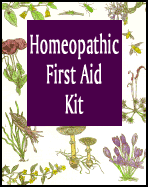The potencies of Homeopathic remedies have a wide range in strength and of course can also be prepared as different diluted series.
The tree series most commonly used are the decimal series- denoted as X or D in France having a dilution ratio of 1:10, the centesimal series - denoted as C, CH,-CK, or with not suffix in England which has a 1:100 ration of dilution , another dilution, the millesimal series- denoted by M- which is a dilution of 1: 50,000. This dilution is not seen as much.
The potencies most commonly used are what are referred to as "prime potencies:"
They are 6x, 6c, 30c, 200c, and 1M (1000c). However in France, the law does not permit the use of Homeopathic remedy to exceed 30c which is considered high potency, but in certain cases MD can prescribe korsakovien potency of 200c. it is for the moment rarely used..
In the United States the prime potencies are mostly used along with 30c and 200c.
The potencies are referred to as low, medium, high and very high. This nomination refers to the quantity of potential kinetic energy which is stored in the tablet (granules, liquid , etc.).. It is considered as the healing energy which simulates the body ( whole + body, mind, emotion, spirit) to heal itself or to return to a balanced state.
Very high potency = CM, 50M, 10M.
High = + 1M, 200C.
Medium = 30C, 30X, 24X.
Low = 3C, 3X, 6X, 6C, 12X, 12C, in Europe there are also 9C, 15C, 7C.
There is no set fast rule to follow for choosing the appropriate potency for an individual. In the matter of fact there are discrepancies between the two main schools of thought as to using lowing potencies or higher potencies. This disagreement occurred in the early 1900 's when Dr. James Kent instituted using high potencies on a constitutional basis emphasizing the mental and emotional aspects. Dr. Richard Hughes believed that these that these were airy nothings (due to Avogaros's principle) and he continued to prescribe based on physical manifestations using the lower potencies. These two approaches are know as the Kentian or the Hughesian , however, many Homeopathies today will encompass both schools and make a decision based on each individual's particular case. It seems that this broader approach have more to offer.
Even though there is disagreement as to the best approach, there are some general guidelines which are followed for potency selection and frequency given.
Acute cases the lower potencies can be given and may be given more often. For example, Arnica 6C may be given for a blow to the leg every 2 to 4 hours up to 12 hours, then three times a day between meals, until the condition improves. For chronic conditions, the higher potencies may be administered and repeated less frequently (TID, SID or constitutionally once a week or longer)
Although potencies may vary, it is of the utmost importance to choose the correct remedy, because the wrong remedy will not work, but if given to a patient a wrong potency of the correct remedy will likely have some beneficial effects. There are general rules to follow in determining the frequency of dosing.
The reaction time of the remedy is taken into account ( e.g. Aconite has a brief reaction time and can be given more frequently whereas Graphites has a longer duration
When improvement is seen the remedy is given less often.
When the conditions greatly improved the dosing is stopped.
If an aggravation occurs then the dosing is stopped until the aggravation ceases.
If different symptoms arise then a different remedy should be considered and the first remedy stopped. |


